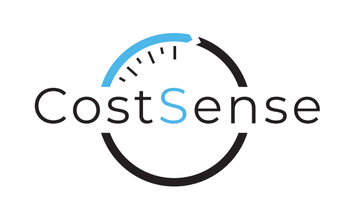What is Financial Planning & Analysis (FP&A)?
Financial Planning & Analysis (FP&A) is a critical finance function that focuses on budgeting, forecasting, financial reporting, and analyzing a company’s financial performance. It involves the process of preparing the financial statements, analyzing the company’s historical performance, and forecasting future financial outcomes to support strategic decision-making
What is the key difference between FP&A and accounting?
In the world of finance, two critical functions often come into play: Financial Planning & Analysis (FP&A) and Accounting. While they are both essential to the financial health of a business, they serve distinct purposes and require different skill sets.
Focus and Purpose:
- FP&A: It helps businesses set financial goals, plan for various scenarios, and allocate resources to meet strategic objectives.
- Accounting: Mainly backward-looking, accounting focuses on recording, classifying, and reporting historical financial transactions.
Role in Decision-Making:
- FP&A: Plays a proactive role in decision-making by analyzing financial data, creating forecasts, and offering recommendations based on potential future outcomes.
- Accounting: Provides the foundational data needed for decision-making by ensuring that financial records are accurate and compliant with regulations.
Analytical Approach:
- FP&A: Emphasizes analysis and interpretation of data. FP&A teams use historical financial data provided by accounting to perform complex analyses, build financial models, and develop strategic recommendations.
- Accounting: Emphasizes accuracy and compliance. Accountants ensure that financial transactions are recorded correctly, financial statements are prepared according to accounting standards, and the company’s financial records are audited and transparent.
Outputs:
- FP&A: Produces forecasts, budgets, financial models, and strategic plans. The outputs of FP&A are used by management to make informed decisions about the future direction of the business.
- Accounting: Produces financial statements, such as the income statement, balance sheet, and cash flow statement, as well as tax filings and audit reports. These outputs provide a historical record of the company’s financial activities
Key Benefits of FP&A for Business
FP&A can be incredibly valuable for Small and Medium-sized Enterprises (SMEs), providing them with the tools and insights needed to navigate financial challenges, support growth, and ensure long-term success. Here are the key benefits of implementing FP&A in an SME:
Improved Financial Visibility
- Comprehensive Financial Insights: FP&A provides SMEs with a clear and detailed view of their financial health. By regularly analyzing financial data, SMEs can gain a deep understanding of their revenue streams, cost structures, and overall financial performance.
- Enhanced Reporting: Through the use of FP&A tools, SMEs can generate regular financial reports that highlight key metrics and trends. These reports can be customized to focus on specific areas of interest, such as cash flow, profitability, or expense management, giving business leaders the information they need to act quickly and effectively.
Example: A small retail business was struggling with cash flow issues and inconsistent profits. The owners couldn’t pinpoint where the money was going or how to improve their financial situation. They implemented an FP&A process, which included regular financial reporting and analysis. The FP&A team set up monthly reports that provided clear insights into revenue, expenses, and profit margins. They also created a cash flow dashboard that updated in real-time. With improved financial visibility, the business quickly identified that a significant portion of their profits was being eaten up by high inventory costs and unprofitable product lines.
Strategic Planning and Forecasting
- Better Budgeting: FP&A allows SMEs to create more accurate and realistic budgets. By analyzing historical data and market trends, FP&A teams can help predict future expenses and revenues, ensuring that the business stays on track financially.
- Scenario Planning: FP&A enables SMEs to perform scenario planning, which involves creating different financial models based on various hypothetical situations (e.g., changes in market conditions, new product launches, or economic downturns).
- Long-Term Growth Strategy: With FP&A, SMEs can align their financial planning with their long-term strategic goals. Whether it’s expanding into new markets, launching new products, or investing in new technology, FP&A provides the financial analysis needed to ensure these growth initiatives are sustainable and backed by solid financial planning.
Example: A family-owned food manufacturing business wanted to expand into new regional markets but needed to ensure that the expansion would be financially sustainable. Using FP&A, the company aligned their financial planning with their growth objectives. The FP&A team conducted a thorough financial analysis, including cost projections, potential revenue, and the required investment for marketing and distribution. The analysis showed that expanding into the new markets would be profitable after two years. With this insight, the company secured financing for the expansion and successfully entered the new markets, resulting in a 30% increase in overall revenue.
Cost Control and Efficiency
- Identifying Cost Savings: FP&A provides SMEs with the tools to analyze their cost structures and identify areas where they can reduce expenses without compromising on quality or efficiency.
- Improving Operational Efficiency: Through detailed financial analysis, FP&A helps SMEs identify inefficiencies in their operations. Whether it’s streamlining processes, renegotiating supplier contracts, or optimizing resource allocation, FP&A enables SMEs to operate more efficiently and improve their bottom line.
Example: A small renewable energy company, was struggling with high operating costs that were cutting into their profits. They knew they needed to reduce expenses but weren’t sure where to start. The FP&A team conducted a thorough review of the company’s expenses, focusing on energy usage, supplier contracts, and operational processes. They identified that the company was overpaying for materials due to outdated supplier contracts and was also incurring high energy costs due to inefficient equipment. By renegotiating supplier contracts and investing in energy-efficient equipment, the company reduced their operating costs by 15%.
Conclusion:
Financial Planning & Analysis is highly beneficial to businesses because it enhances financial visibility, supports strategic planning, and improves decision-making.
By providing accurate budgeting, forecasting, and scenario analysis, FP&A helps businesses anticipate challenges, manage risks, and allocate resources efficiently. It also aids in optimizing cash flow, controlling costs, and improving operational efficiency.
Ultimately, FP&A equips businesses with the financial insights needed to drive sustainable growth, adapt to market changes, and achieve long-term success.


